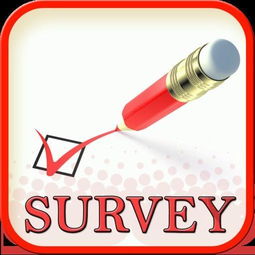Survey: A Comprehensive Guide to Understanding the Power of Data Collection
Have you ever wondered how companies gather information about their customers? Or how researchers can make significant discoveries? The answer lies in the world of surveys. Surveys are a powerful tool used for collecting data from a large number of people. In this article, we will delve into the various aspects of surveys, from their purpose to the best practices for conducting them.
What is a Survey?

A survey is a research method used to collect data from a specific group of people. It can be conducted through various mediums, such as online, in-person, or over the phone. The primary goal of a survey is to gather information that can be used to make informed decisions, solve problems, or understand trends.
Types of Surveys

There are several types of surveys, each with its unique characteristics and purposes. Here are some of the most common types:
-
Online Surveys: These surveys are conducted over the internet and can reach a large audience quickly. They are cost-effective and can be easily distributed to a wide range of people.
-
Mail Surveys: Mail surveys are sent through the postal service and require participants to fill them out and return them. They can be more expensive and time-consuming but are often considered more reliable.
-
Phone Surveys: Phone surveys involve calling participants and asking them questions. They can be more personal and provide richer insights but can also be more expensive and time-consuming.
-
In-Person Surveys: These surveys are conducted face-to-face and can provide the most detailed information. However, they can be the most expensive and time-consuming.
Why Conduct Surveys?

Surveys are used for a variety of reasons, including:
-
Market Research: Companies use surveys to understand consumer preferences, identify market trends, and make informed decisions about their products and services.
-
Customer Satisfaction: Surveys can help businesses gauge customer satisfaction and identify areas for improvement.
-
Political Polling: Surveys are used to predict election outcomes, understand public opinion, and inform policy decisions.
-
Health Research: Surveys can be used to collect data on health behaviors, risk factors, and outcomes.
Designing a Survey
Designing a survey is a critical step in the research process. Here are some key considerations:
-
Define the Objective: Clearly state the purpose of the survey and what you hope to learn from it.
-
Choose the Right Questions: Use a mix of open-ended and closed-ended questions to gather both qualitative and quantitative data.
-
Target Audience: Identify the group of people you want to survey and ensure that your questions are relevant to them.
-
Sample Size: Determine the number of participants needed to ensure that your results are representative of the target population.
Conducting the Survey
Once you have designed your survey, it’s time to conduct it. Here are some tips for a successful survey:
-
Choose the Right Method: Decide whether to conduct the survey online, by mail, over the phone, or in person.
-
Recruit Participants: Use various methods to reach your target audience, such as social media, email, or phone calls.
-
Monitor the Process: Keep track of the survey’s progress and make adjustments as needed.
-
Ensure Data Quality: Validate the responses to ensure that they are accurate and reliable.
Analyzing the Data
Once you have collected the data, it’s time to analyze it. Here are some common methods:
-
Descriptive Statistics: Summarize the data using measures such as mean, median, and mode.
-
Inferential Statistics: Use statistical tests to determine whether the results are significant.
-
Qualitative Analysis: Analyze open-ended responses to gain insights into participants’ opinions and experiences.
Interpreting the Results
Interpreting
